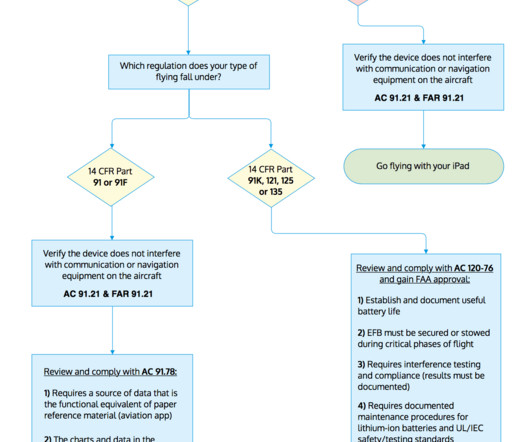Electronic flight bag legal briefing for pilots—2024 edition
iPad Pilot News
MAY 14, 2024
Here we’ll cover the applicable Federal Aviation Regulations (FARs) and Advisory Circulars (ACs). ” Offers modern (2021) guidance on how pilots can conduct preflight self-briefings—including with an EFB app. By self-briefing, pilots can often improve their knowledge of weather and aeronautical information.”













Let's personalize your content